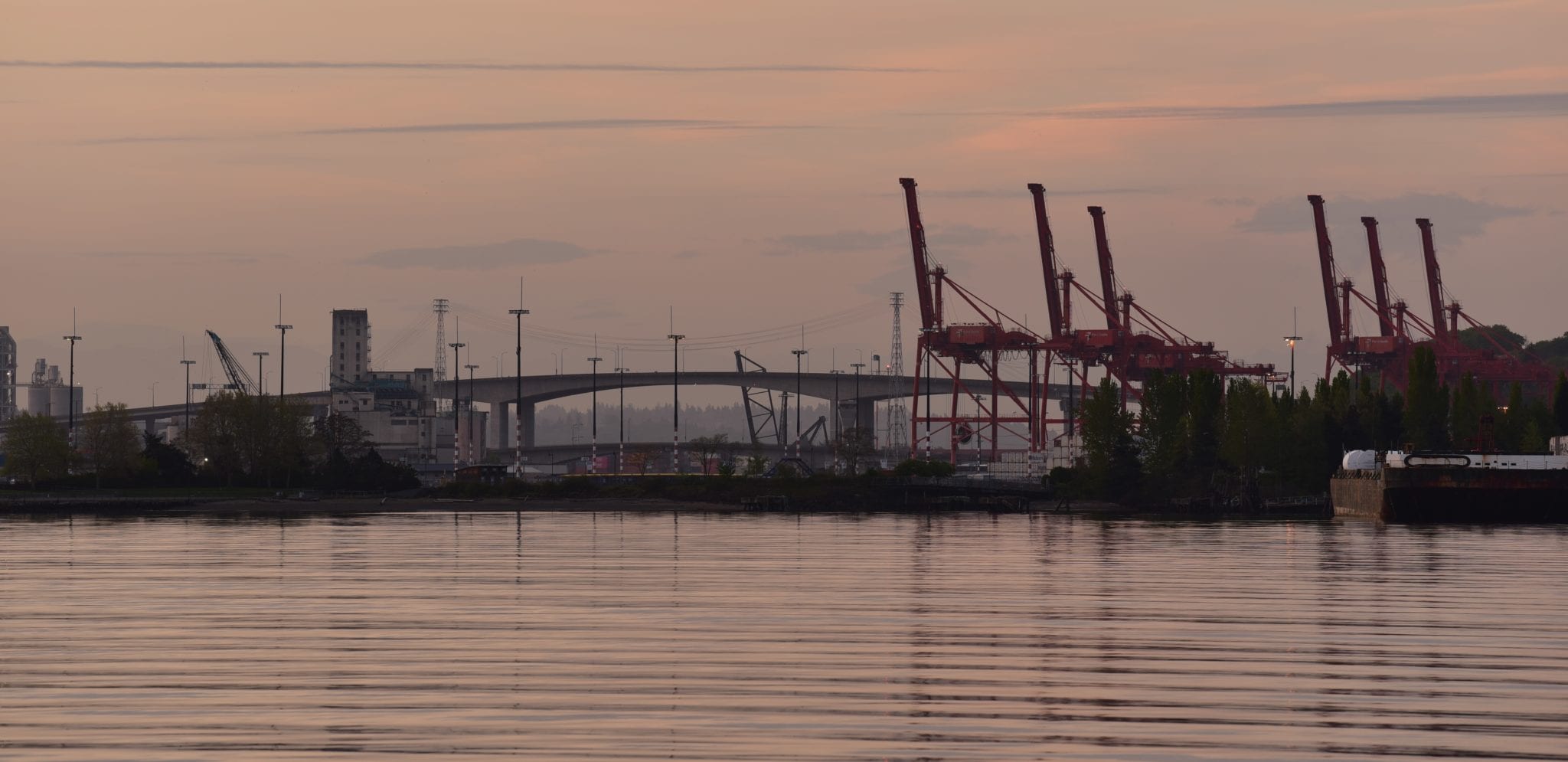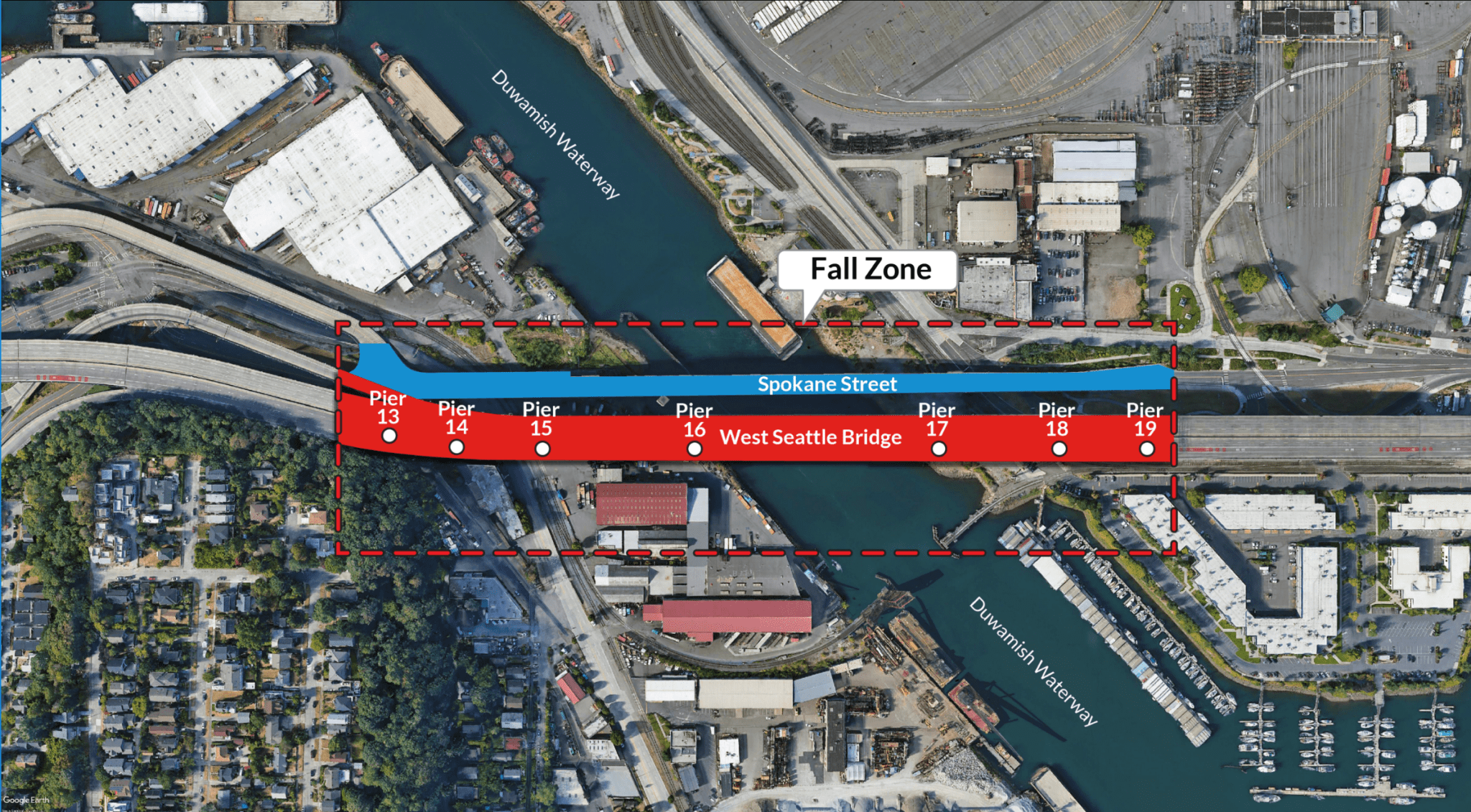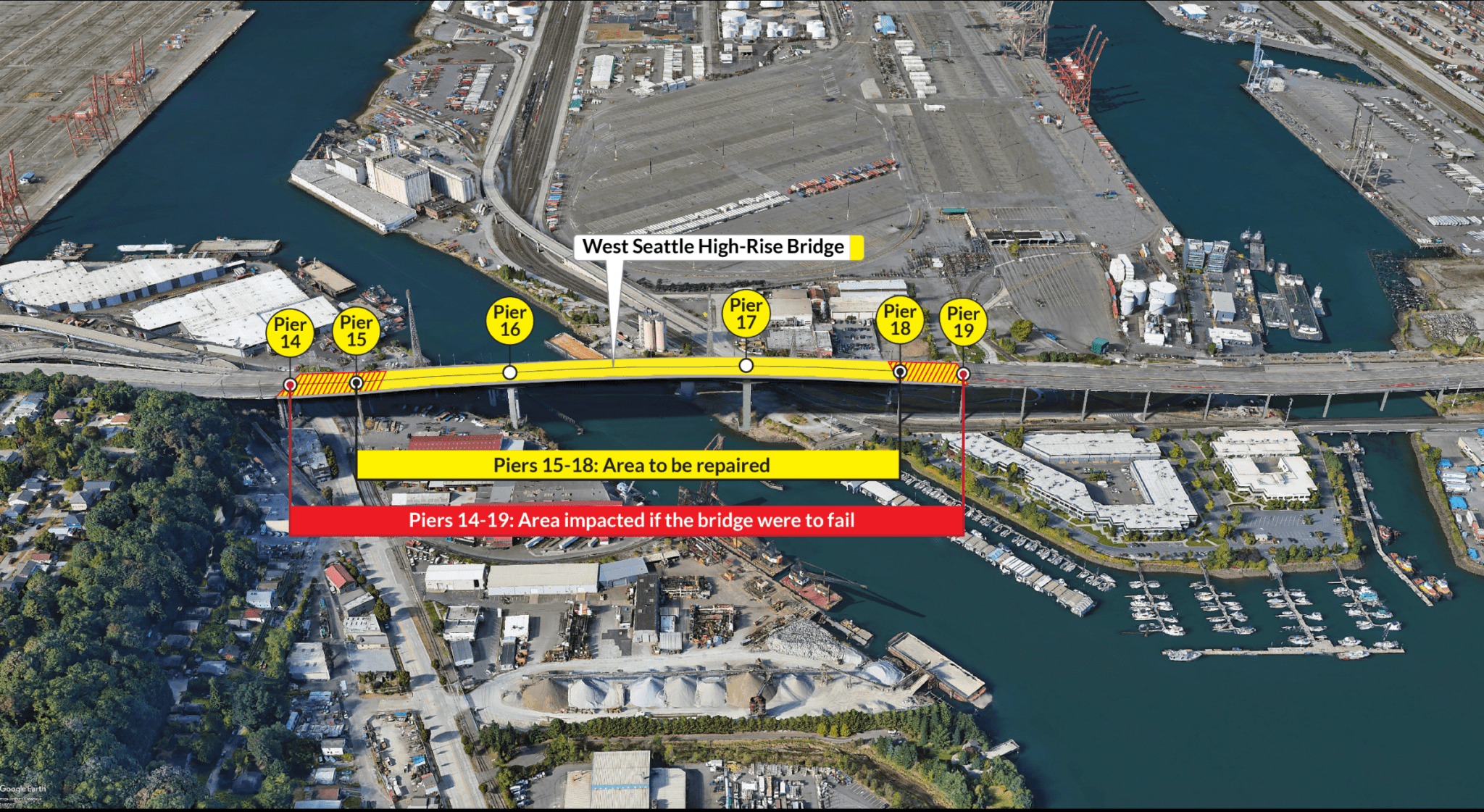 Photo by Chun Kwan
Photo by Chun Kwan Since the emergency closure of the West Seattle High-Rise Bridge on March 23, 2020, we have made clear through action and deed that public safety, consistent communication, and transparency are foundational to our teams and partners. We are working with great urgency to chart the path forward for the high bridge.
Today, we are sharing a Conceptual Modes of Failure Memo prepared by our structural engineering consultant, WSP, which uses careful analysis and modeling to determine how the high-rise bridge could deteriorate should it reach failure.
In addition, the purpose of this memo is to also help us identify early warning signs and implement additional safeguards to catch any issues before it is too late.
This memo is not a prediction of the future. Rather, it is a science-based and data-informed approach to safety preparedness. Our goal is to identify all of the possibilities so that we can be prepared for anything, identify the early warning signs, and take the proactive steps necessary to reduce these risks.
Found within the memo is a summary of information that SDOT has previously shared elsewhere, often in greater detail. There is, however, no substitute for primary source materials and we want the public to have access to these critical documents throughout this challenging process. With this in mind, we also published all previous West Seattle High-Rise Bridge inspection reports on April 7 as part of our ongoing commitment to clear communication and transparency.

The modeling of potential cracking scenarios and other critical information identified in this memo, that we received earlier, were used to inform our emergency response plan.
The plan includes the perimeters of the “fall zone”, which is the only area where debris from the high-rise bridge could drop. Also included within this zone is an additional 75’ buffer in all directions for increased safety. Out of an abundance of caution, we asked WSP to develop this memo so that SDOT and our partners could have a science-based, data-informed approach to safety preparedness.

The memo identifies 9 proactive steps to prepare for, and potentially prevent, these worst-case scenarios. We have already begun work on all of them.
These mitigation efforts can be taken to better understand and monitor the structural integrity of the bridge, then stabilize and potentially prevent bridge failure. Many of them will sound familiar to those who have been closely following our efforts to stabilize, shore, and gather the additional information needed to determine whether we repair or replace the bridge.
The steps to better understand and monitor the structural integrity of the bridge include:
- Continue the daily visual inspections of the bridge
- Implement an automated intelligent monitoring system that collects data in real time
- Implement localized data logging using an automated system that will report total deformation across multiple cracks
- Undertake non-destructive testing of select vertical post tensioned tendons
All these steps are underway. We have conducted in-person visual inspections of the bridge every day since March 20. We have nearly completed installation of the intelligent monitoring system that includes 8 high-resolution cameras, 16 movement sensors, and 52 vibrating wire sensors to monitor cracking.
Our structural engineering consultant has completed about 30 percent of the 100+ non-destructive tests we plan to conduct. This includes using ground penetrating radar to create an image of cavities and voids deep within the bridge concrete and identify whether there is any corrosion around the steel support tendons. We look forward to sharing more about this incredible technology and the important role it plays in a future blog post.
The steps to stabilize the bridge and potentially prevent bridge failure include:
- Design and construct interim repairs at the distressed locations to arrest the crack propagation in the near term.
- Repair the bearings at Pier 18 that are restricting thermal expansion and contraction movements of the structure.
- Design, fabricate, and deploy temporary shoring to support the bridge in case of partial or multi-span superstructure collapse.
- Evaluate full repair alternatives relative to the potential need for bridge replacement.
- Design and construct full repairs if feasible or demolish the bridge and plan for a bridge replacement.
In April, we used emergency contracting authority to fast-track the selection a contractor to repair the bearings at Pier 18 and help stabilize the bridge.
The contractor is now working with the design team to review the bridge stabilization designs, as well as developing plans for construction, health and safety, equipment and material procurement, work timelines and schedules. Construction will begin once the design has been completed, permits have been obtained, and customized materials have been procured.
We still don’t know yet whether it will be possible to ever fully repair the bridge. Every day we learn more information that will help us determine whether it’s technically or financially feasible. But no matter what, we do know that it is absolutely essential for us to begin the stabilization process now to ensure we preserve the integrity of the high bridge to the greatest possible extent to keep all future repair or replace options on the table.
All of this work on the bridge is just one of the many areas we are intensely focused on. From “on the bridge” to “on the ground” to “in the community”, we are staying busy, proceeding on all fronts with urgency, and we look forward to sharing more details on these efforts in the coming week.
Sign up to receive West Seattle High-Rise Bridge project update emails.
Visit our West Seattle High-Rise Bridge website and stay informed!
- Sign up for periodic emails to stay up to date on the bridge.
- Peek the frequently asked questions.
- Check out the inspection reports.
- Find links to other West Seattle Bridge blog articles.